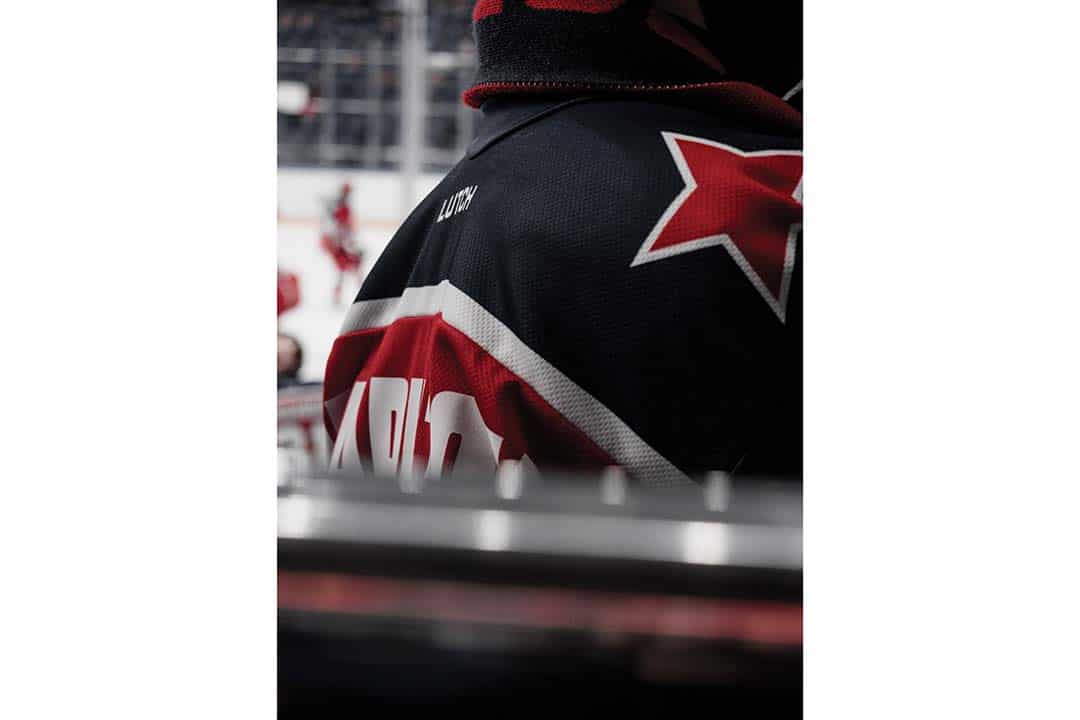In 2015, it was seen to be abhorrent to add jersey ads to NHL sweaters. “I like the history and tradition and the way [hockey jerseys] look,” explained NHL Commissioner Gary Bettman in an NBC interview in 2015. “I’ve repeatedly said we wouldn’t be the first [to add ads to our jerseys] and you’d probably have to bring me kicking and screaming.”
Bettman could not have predicted the COVID-19 pandemic that forced many teams to play without fans in the stands. Seven years after Bettman’s initial statement regarding jersey advertisements, some teams are adding sponsors to their jerseys to recover from losses incurred during the pandemic.
Fans have had mixed reactions. A common critique is that the sponsored patch taints the sanctity of some jerseys. Others dismissed the need to recover lost revenue from the pandemic, instead expressing disapproval at the league for engaging in what they see as penny pinching.
When asked about the new addition to the jersey, Toronto Maple Leafs’ captain, John Tavares, simply stated: “[We always] knew something like that was coming.” He isn’t wrong — jersey sponsors aren’t new and their introduction into the NHL was easy to predict.
Jersey sponsors have existed in other sports for a while already. NASCAR is perhaps the most prominent example, with drivers’ jerseys and cars being littered with sponsors. In European soccer leagues, it’s also common for jerseys to have more than one sponsor on them. In the WNBA, the sponsor dominates the jersey — the team’s logo and names are completely absent. Furthermore, several hockey leagues outside of the NHL utilize jersey sponsors, meaning this isn’t even a new addition to the hockey world.
Over the last five years, the phenomenon made its way into some of North America’s major sports leagues. The NBA allowed sponsors on jerseys in 2017, while in the MLB, teams will be allowed to get jersey sponsors starting this upcoming season. The NFL is the only outlier, where sponsors are allowed only on practice jerseys. Nevertheless, it’s obvious that jersey sponsors have become a key source of revenue for leagues.
It’s important to note that the changes have come with some strict restrictions. The NHL’s rules stipulate that the sponsor must fit within a three-inch-by-3.5-inch patch that can only be positioned on either side of the chest or shoulder. For now, there is no reason to believe that hockey jerseys may soon resemble NASCAR jerseys.
“The more logos you put on there, the less value there might be,” explained Keith Wachtel, the NHL’s chief business officer and senior executive vice president. “So the clubs wanted to go with the one ad. That’s what we’ll have for the foreseeable future.”
The addition of sponsors will bring in more revenue, currently estimated at $5–10 million per team. This will come with benefits, like preventing ticket prices from rising or providing revenue for teams to renovate stadiums to improve the fan experience.
Wachtel explained another benefit that the jersey patches could bring by helping to make the NHL globally influential.
“We are a global sport, with a significant amount of players that come from overseas,” said Wachtel. “While there certainly will be opportunities for our clubs with local market companies… I do see some of our clubs looking at global brands that are looking for the global exposure that the NHL can provide.”
Some worry that the addition of sponsored jerseys will not be as profitable as currently predicted. Hockey is such a fast-paced game that the logo will barely be visible on cameras. Comparatively, in the NBA, free throws slow the game and allow brands to capitalize on more close-up visuals.
Upset fans will likely have to get used to the new addition. Ultimately, the NHL is already heavily sponsored, as seen on the helmets, ice, boards, and in the names of the stadiums. At the very least, the NHL seems willing to appease upset fans — jerseys without the sponsor are still available for purchase.
The optimistic outlook is that hopefully the extra revenue generated from this sponsoring will be used to benefit fans.
“I know people like the pure jersey,” Nick Suzuki, captain of the Montreal Canadiens explained. “But it’s how it is. It’s where the NHL is going.”


